Results 571 to 580 of 12096
Thread: Anandtech News
-
06-14-11, 11:10 PM #571
Anandtech: Annual Toshiba Refresh Brings Llano...and Some Style
The regular refreshes that come from notebook vendors aren't often the stuff of exciting news. It's generally a processor update, maybe a slight change in shell design. With Toshiba's 2011 refresh that's not entirely untrue, but this year they've timed their update to coincide with the launch of AMD's Llano APU and NVIDIA's launch of the GeForce GTX 560M. Their Fusion finish is also getting a much needed update along with the top-of-the-line Qosmio. Bottom line: there's a lot going on at Toshiba.

More...
-
06-15-11, 03:00 PM #572
Anandtech: Intel SSD 710 and 720 Series Specifications Revealed
In our Intel roadmap article published in May, we shortly previewed Intel's upcoming 700 Series SSDs. Back then there wasn't much to talk about as very few specs were known. Today we have some additional details to share, thanks to German site ComputerBase.de.
Intel SSD 700 Series Series 710 720 Codename Lyndonville Ramsdale Capacities (GB) 100/200/300 200/400 NAND type 25nm MLC-HET 34nm SLC Cache (DRAM) 64MB 512MB Interface SATA 3Gb/s PCIe 2.0 Read speed 270MB/s 2200MB/s Write speed 210MB/s 1800MB/s 4KB read 35 000 IOPs 180 000 IOPs 4KB write 3 300 IOPs 56 000 IOPs Power (active/standby) 4W/0.095W 25W/8W Security AES-128 encryption AES-256 encryption Data path protection LBA tag checking End to end data protection I want to start off by saying that these SSDs are aimed at enterprise use. If you want an SSD for your gaming rig, you should look at our mid-range SSD roundup for example.
The Intel 700 Series is meant to replace the X25-E lineup, Intel's enterprise series, which hasn't been updated since late 2008 so it's long overdue. However, neither of these is an exact successor. The 710 Series is closer with its 2.5" form factor and SATA 3Gb/s. The 710 Series is actually pretty close to the 320 Series in terms of specs: sustained write is slightly higher but random performance is a bit lower. The biggest difference between the 320 and 710 series is the NAND type. 320 Series uses regular MLC that you can find inside any mainstream SSDs; 710 Series is Intel's first enterprise level SSD to use MLC NAND, but not just any kind of MLC—it will use MLC-HET NANDs. MLC-HET offers more write cycles per cell so longetivity is increased, which is crucial for enterprises. The only downside is that MLC-HET will only last for 3 months after all write cycles have been used, whereas normal MLC will last for 12 months. However, this shouldn't be an issue due to the increased amount of write cycles. For the record, MLC-HET with 20% over-provisioning (OP) appears to offer roughly 65 times greater endurance than normal MLC.
The 720 Series will be Intel's first PCIe SSD. To take full advantage of it, you will need at least a PCIe 2.0 x8 slot since a x4 slot will only provide up to 2GB/s while the 720 Series provides read speeds of up to 2.2GB/s. It will use 34nm SLC NANDs, which is pretty common for high-end enterprise SSDs due to SLC's much better endurance. The 720 Series promises up to 36PB (yes, as in 36000TB) of 8KB writes for the 400GB SSD. That is nearly 1000 times more durable than 25nm MLC and over 10 times more durable than 25nm MLC-HET.
320 Series 710 Series 720 Series Capacity (GB) 80 160 300 100 200 200 400 Endurance (TB) 5 15 30 500/900 (20% OP) 1000/1300 (20% OP) 18000 36000 Reliability (MTBF-hours) 1.2 million 2.0 million N/A One of the biggest and most needed upgrades from X25-E is the much better encryption support. X25-E offered only ATA password protection, which is way too vulnerable by today's standards, especially when considering that even the mainstream 320 Series supports 128-bit AES. 720 Series will take that one step even further by supporting 256-bit AES encryption. This is very important for enterprises handling confidential data; you don't want your data get into the wrong hands and you are ready to pay the premium for the best protection.
This update is essential for Intel to stay competitive in the enterprise SSD market. It has already been 2.5 years since the last update and when considering the progress of SSDs during this time, it's surprising that the update hasn't take place sooner. There isn't much news on the release schdule so the best we've got is what we have already posted: Q2'11 for 710 Series and Q4'11 for 720 Series SSDs. The 710 Series seems to be the low-end offering and it's basically the same as the 320 Series with improved endurance. The 720 Series, on the other hand, is an SSD for heavy enterprise use with features making it suitable for such use. OCZ has pretty much been the dominator of PCIe SSD market but Intel's 720 Series could offer some serious competition in the high-end PCIe SSD market.
More...
-
06-16-11, 02:50 PM #573
Anandtech: This Just In: OCZ's Vertex 3 MAX IOPS 120GB, The New Mid-Range King?
I mentioned in our Mid-Range SSD Roundup that most SSD vendors like sampling the best balance of capacity/performance when it comes to SSD review samples. For the SandForce SF-2281 with 25nm NAND that just happens to be 240GB. Unfortunately there's a pretty big fall off in performance when going from 240GB to 120GB due to the decrease in total number of NAND die (8GB per die x 32 die vs. 16 die). I've explained this all before here.
Enter OCZ's MAX IOPS drive. Using 32nm Toshiba Toggle NAND instead of 25nm IMFT ONFI 2.x NAND the die capacity drops to 4GB, which means you get twice as many die per NAND device. The end result? 240GB Vertex 3 performance for slightly more than 120GB Vertex 3 pricing.
I ordered the 120GB MAX IOPS drive at the beginning of the week and just got it in yesterday so I've only had a small amount of time to test with it thus far. Check out the 120GB MAX IOPS drive vs. the Intel SSD 510 in Bench using our 2011 storage test suite. Expect the full review in the coming days.
More...
-
06-17-11, 01:40 PM #574
Anandtech: Sandy Bridge Buyer’s Guide
Almost a half-year after the launch of the second-generation Core processors, Intel’s newest CPUs remain dominant in the mid- to high-end desktop computing markets. Since the January release of the initial Sandy Bridge chips, myriad newer, niche-specific CPUs have arrived at retailers. Importantly, the Cougar Point chipset debacle is entirely resolved, with all Sandy Bridge-supporting motherboards available through reputable retailers free of the degrading SATA ports that plagued Sandy Bridge’s first few months. Like the Sandy Bridge CPUs themselves, the Cougar Point motherboards have diversified into a range of budgets and feature sets. Given the recently announced delay of AMD’s upcoming Bulldozer processors for desktops, Sandy Bridge will remain unchallenged at the high-end of desktop computing until at least September. If you want to build a powerful desktop to use when you’re not lounging by the pool and grilling delicious meats this summer, this guide has you covered with a $500-$600 budget build, a $1,000 midrange system, and a $2,000 high-end gaming-centered system.
More...
-
06-17-11, 03:40 PM #575
Anandtech: AMD's Graphics Core Next Preview: AMD's New GPU, Architected For Compute
We’ve just returned from sunny Bellevue, Washington, where AMD held their first Fusion Developer Summit (AFDS). As with other technical conferences of this nature such as NVIDIA’s GTC and Intel’s IDF, AFDS is a chance for AMD to reach out to developers to prepare them for future products and to receive feedback in turn. While AMD can make powerful hardware it’s ultimately the software that runs on it that drives sales, so it’s important for them to reach out to developers to ensure that such software is being made.
While AFDS serves many purposes, the final purpose – and what is going to be most interesting to most outside observers – was to prepare developers for what’s coming down the pipe. AMD has big plans for the future and it’s important to get developers involved as soon as is reasonably possible so that they’re ready to use AMD’s future technologies when they launch. Over the next few days we’ll talk about a couple of different things AMD is working on, and today we’ll start with the first and most exciting project: AMD Graphics Core Next, AMD's next generation GPU architecture.
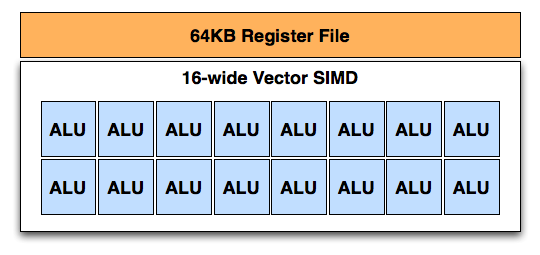
More...
-
06-20-11, 08:10 AM #576
Anandtech: Alienware's M17x R3: An Antidote to Clevo
We've had our hands on quite a few gaming notebooks here, but most of the time they're Clevo-based machines. These aren't necessarily bad notebooks; they're fast, typically have good screens, and they get the job done. Yet they also have some persisting drawbacks: build quality isn't often that hot, the battery is a glorified UPS system, and they feature some of the worst keyboards on the market. ASUS, MSI, Toshiba, and HP all offer fairly compelling alternatives, and today Alienware brings us a particularly interesting contender in the form of the M17x R3.
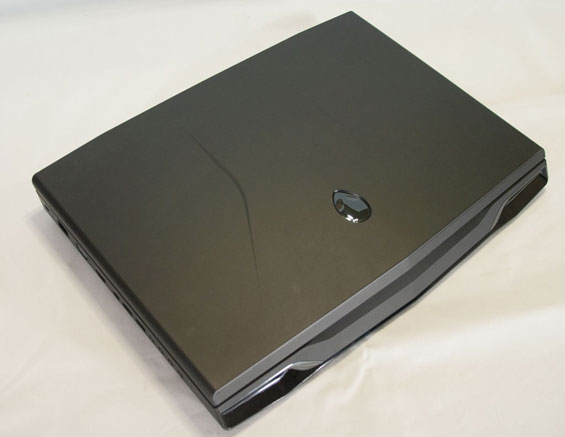
More...
-
06-20-11, 08:10 AM #577
Anandtech: Sigma Designs Skini Platform: Home Convergence using Hybrid STBs
While smartphones are bringing about the personal convergence revolution, there is still a battle going on to determine the convergence product at the residential level. Sigma Designs, through various acquisitions over the years, is placing its bet on set top boxes (STBs) as the vehicle for in-home convergence.
Today, Sigma Designs is introducing Skini, a platform for hybrid set top boxes. Read on to find out more about this interesting platform.
More...
-
06-20-11, 03:30 PM #578
Anandtech: Motorola Droid 3 Pops up in GLBenchmark - A Verizon XT883 with OMAP4
A tipster dropped a link our way early this morning to a GLBenchmark 2.0 results browser page that might be of interest to many. Hit that page and you'll find a complete run of the current GLBenchmark 2.0 suite, and a bit of a confirmation about what is and isn't the upcoming Motorola Droid 3. It isn't Tegra 2, it's OMAP 4430.
First off, the hardware specifications that we can glean from the information page seem to make it a virtually identical match with the specs of the Motorola Milestone 3, or XT883. That means a qHD 960x540 display likely 4" in size, hardware five-row QWERTY keyboard, Android 2.3.4, 1 GB of LPDDR2, 8 MP rear camera, front camera, and of course an accompanying CDMA2000 baseband for Verizon.
Given the number of recent flagship Motorola product launches with Tegra 2 SoCs, starting with the Motorola Atrix, the Droid X2, and the now-delayed Droid Bionic it seemed that a flagship (read: QWERTY keyboard-packing) summer Motorola Droid launch with Tegra 2 was inevitable. From the results page, it now seems that the Motorola Droid 3 will include a 1GHz OMAP 4430 SoC with PowerVR SGX 540 graphics, and not a Tegra 2.
The model in the results browser is codenamed "Solana" which matches the codename we've heard about for the Verizon-bound Motorola Droid 3. The photos below are of the XT883 which the Motorola Droid 3 will undoubtedly bear an uncanny resemblance to.
Motorola Milestone 3 - XT883 for China (courtesy: Motorola Mobility)The benchmarks themselves paint an interesing picture, and while we're at it I've tossed in some other devices we have in-hand but haven't finished our full reviews of yet for comparison with these results from the Motorola Droid 3. Again GLBenchmark 2.0 runs we're reporting here are at native resolution for the respective devices, which we've now included in the description line for comparison. For a quick refresher, WVGA is 800x480, FWVGA is 854x480, and qHD is 960x540.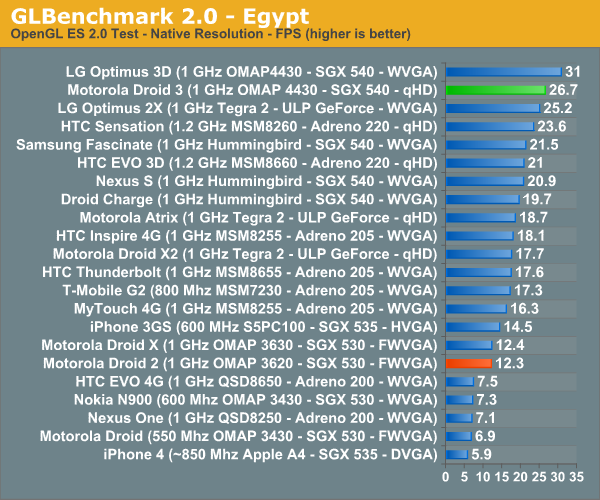
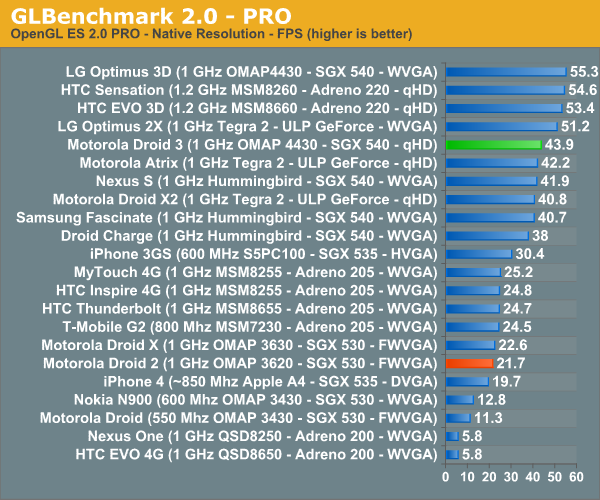
I've highlighted the previous Motorola Droid 2 results (which we reviewed last year) just for fun to illustrate how far we've come in one calendar year.
The Motorola Droid 3 results are impressive, edging out the Adreno 220-packing HTC Sensation and EVO 3D in the more demanding Egypt test, but not quite in Pro. No doubt this is thanks at least partially to the newer Imagination drivers which give a small performance boost.
More...
-
06-21-11, 12:30 AM #579
Anandtech: Nokia N9 and N950 Officially Announced - MeeGo Running Atop OMAP 3630
Back when we reviewed the Nokia N900 we really only wanted a few major improvements. A faster SoC, slightly thinner and more compact hardware, and more of Maemo Linux. It's been a long wait since then, and Nokia has changed its lineup, canceled the original N900 successor, taken on a new CEO, and rebooted itself under the Windows Phone 7 umbrella.
Those of us that wanted a smartphone running real bona-fide linux seemed destined to be waiting forever. Today however, Nokia officially announced the Nokia N9 and N950 at its Nokia Connection event in Singapore.
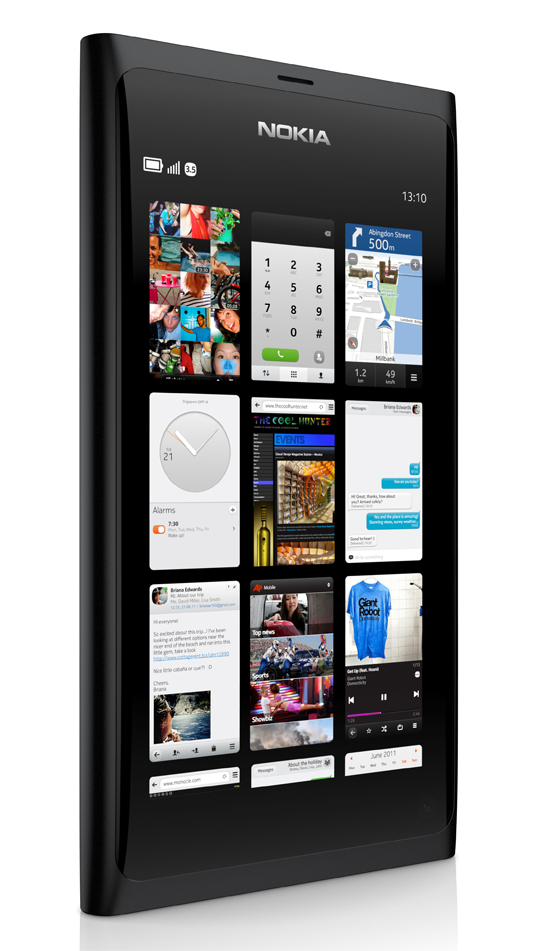 The N9 runs MeeGo, which as you likely know by now is the combination of Nokia's Maemo and Intel Moblin. Seeing MeeGo in smartphone form has something we've been waiting for, for, well, a long time now. The N9's industrial design looks nothing short of stunning, though all of the photos of the device so far appear to be renders and not actually physical hardware. What's unique about the N9 is that the front of the device is buttonless, virtually everything is accomplished by tapping on the capacitive touchscreen, including unlocking the device. There's still volume, power, and camera buttons however.
The N9 runs MeeGo, which as you likely know by now is the combination of Nokia's Maemo and Intel Moblin. Seeing MeeGo in smartphone form has something we've been waiting for, for, well, a long time now. The N9's industrial design looks nothing short of stunning, though all of the photos of the device so far appear to be renders and not actually physical hardware. What's unique about the N9 is that the front of the device is buttonless, virtually everything is accomplished by tapping on the capacitive touchscreen, including unlocking the device. There's still volume, power, and camera buttons however. Nokia really seems to have spent a lot of time working on UI for MeeGo as evidenced by an interesting three home screen design, emphasis on using the swipe gesture to change applications, and pinch gestures for getting a multi-window view. The three home screens are purpose-designed for launching applications, viewing open applications and multitasking, and managing events such as news and messages. The N9 is polycarbonate plastic and unibody construction, and is sans-keyboard. Its cousin is the similarly-specced N950, which is a non-retail developer device that looks like what remains of the original N9. There are anumber of small differences between the N9 and the N950, chief among which is inclusion of a hardware QWERTY keyboard and aluminum construction, thanks again to Simon for finding these differences and tipping me on them.The two devices also have pentaband WCDMA support and quad band GSM/EDGE support, though there's no word on what cellular baseband is at the core of everything. In addition, the N9 includes NFC support, though Nokia hasn't specifically stated whether all three NFC modes are supported. In all likelihood this is assumed now given NFC chipset maturity.
Nokia really seems to have spent a lot of time working on UI for MeeGo as evidenced by an interesting three home screen design, emphasis on using the swipe gesture to change applications, and pinch gestures for getting a multi-window view. The three home screens are purpose-designed for launching applications, viewing open applications and multitasking, and managing events such as news and messages. The N9 is polycarbonate plastic and unibody construction, and is sans-keyboard. Its cousin is the similarly-specced N950, which is a non-retail developer device that looks like what remains of the original N9. There are anumber of small differences between the N9 and the N950, chief among which is inclusion of a hardware QWERTY keyboard and aluminum construction, thanks again to Simon for finding these differences and tipping me on them.The two devices also have pentaband WCDMA support and quad band GSM/EDGE support, though there's no word on what cellular baseband is at the core of everything. In addition, the N9 includes NFC support, though Nokia hasn't specifically stated whether all three NFC modes are supported. In all likelihood this is assumed now given NFC chipset maturity.Nokia Device Specifications Nokia N9 Nokia N950 Height 116.45 mm (4.58") (?) Width 61.2 mm (2.41") (?) Depth 7.6 - 12.1 mm (0.3" - 0.48") (?) Weight 135 g (4.76 oz) (?) CPU TI OMAP 3630 @ 1 GHz TI OMAP 3630 @ 1 GHz GPU PowerVR SGX 530 PowerVR SGX 530 RAM 1 GB LPDDR 1 GB LPDDR NAND 16GB or 64GB integrated 16GB or 64GB integrated Camera 8MP Carl Zeiss 16:9 F/2.2 with Dual LED flash and 720P video capture, Front Facing (?MP) 8MP with Dual LED flash and 720P video capture, Front Facing (?MP) Screen 3.9" FWVGA (854x480) AMOLED with Gorilla Glass 4.0" FWVGA (854x480) LCD-TFT Battery 1450 mAh Integrated(?) 1320 mAh Bluetooth Bluetooth 4.0 Bluetooth 2.1+EDR WiFi 802.11a/b/g/n 802.11a/b/g/n NFC Yes No Sensors Accelerometer, Compass, Proximity, Ambient Light "N9 has a slightly more sensitive magnetometer and ALS" OS MeeGo 1.2 Hartmattan MeeGo 1.2 Hartmattan
The device looks solid, though there's no word on a specific release date or pricing, just "later this year."Nokia N9/N950- Network Support GSM/EDGE Support 850 / 900 / 1800 / 1900 MHz UMTS/HSDPA/HSUPA Support 850 / 900 / 1700 / 1900 / 2100 MHz HSDPA/HSUPA Speeds HSDPA 14.4 / 5.7 Mbps Baseband Hardware (?)
More...
-
06-21-11, 03:11 AM #580
Anandtech: The HTC Flyer Review
This is HTC's first tablet and unlike the Android tablets that launched last year, it doesn't suck. At the same time, unlike those that came out this year - it doesn't run Honeycomb. You see, NVIDIA was Google's target partner for Honeycomb and Qualcomm was pretty behind on porting the OS to its hardware. As a result the only Honeycomb tablets on the market today use Tegra 2.
Qualcomm is a minority shareholder in HTC and as a result the Taiwanese manufacturer tends to only ship Qualcomm SoCs in its products. With the NVIDIA option pretty much off the table, so was Honeycomb.
Yet HTC clearly saw it as very important to deliver a tablet this year. I'm getting close to overusing this quote but I will never forget what AMD's Eric Demers told me: the best way to lose a fight is to not show up. The tablet battle has only just begun and only through tireless iteration will we see clear leaders emerge, so not showing up to this early fight isn't an option for most of the players.
If you don't have the hardware platform to ship Honeycomb on time and all non-Honeycomb tablets seem to fail horribly, what is a company left to do? Try something different of course.
Read on for our review of the HTC Flyer!
More...
Thread Information
Users Browsing this Thread
There are currently 43 users browsing this thread. (0 members and 43 guests)





 Quote
Quote



















Bookmarks